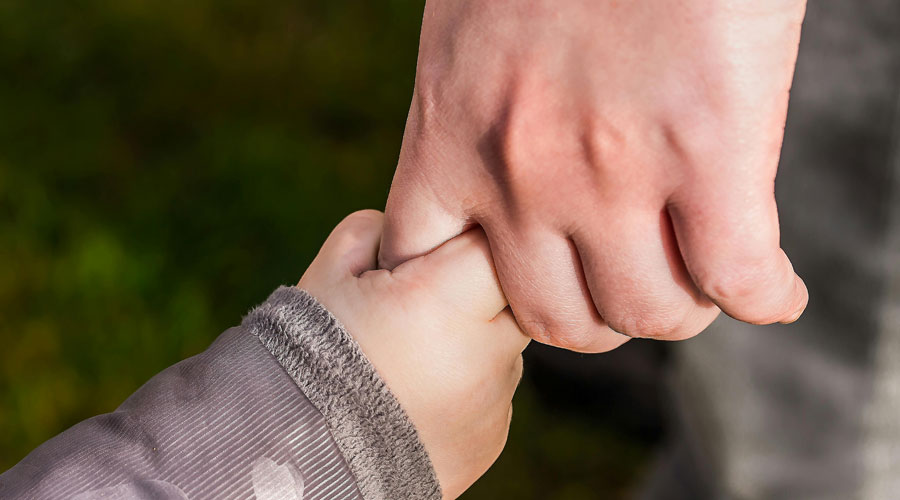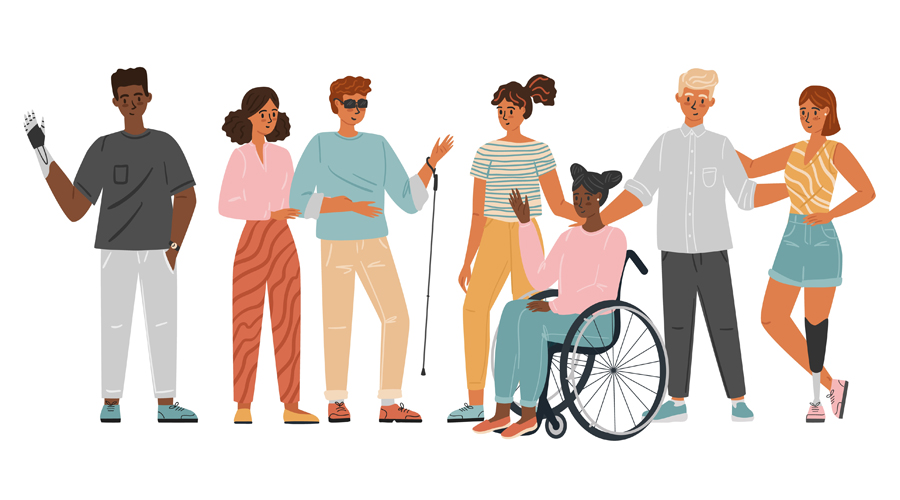The Role of Education in Suicide Prevention: Empowering Our Communities
By Dr. Kate Truitt
According to the World Health Organization, suicide is a serious public health problem, with over 700,000 people dying by suicide each year worldwide. It is the fourth leading cause of death among young people aged 15-29.
The Importance of Education in Suicide Prevention
Education plays a crucial role in suicide prevention, and its significance cannot be overstated. By empowering individuals with knowledge and understanding, education can be a powerful tool for saving lives.
- Reducing the Stigma Surrounding Mental Health
Society often attaches unfair judgments and misconceptions to individuals struggling with mental illness, creating an environment where seeking help can be daunting. However, through education, we can break down these barriers and foster a more compassionate and understanding community.
By promoting open conversations and providing accurate information, education helps create an environment where people feel comfortable seeking support, destigmatizing mental health issues, and ultimately preventing suicides.
- Aids in the Identification of Risk Factors and Warning Signs of Suicide
Understanding these indicators is crucial for early intervention. By educating ourselves and others about the warning signs, we can learn to recognize when someone is struggling and lend a helping hand. This might involve noticing changes in behavior, expressions of hopelessness, or withdrawal from social activities. Armed with this knowledge, we can intervene early and potentially save a life.
Warning signs can manifest in various ways, such as sudden changes in behavior or mood, expressions of hopelessness, or withdrawal from social interactions.
- Equip Us with the Tools We Need to Intervene Effectively
Gatekeeper training, for example, equips individuals with the ability to communicate with someone who is suicidal and connect them with appropriate help. This training not only teaches us how to have difficult conversations but also informs us about available resources and support networks. By empowering ourselves and others with this knowledge, we can confidently offer support, facilitate conversations about mental health, and ultimately prevent suicides.
At Truitt Institute, we understand the importance of specialized trainings for community and school programs that’s why he have a range of programs tailored to different needs. This ensures that each group receives suitable and unique education that may be able to support them in their challenges such us:
- The Resilient Brain Programs: A Program for all Bridging Neuroscience and Mental Health Support designed for healthcare professionals, wellness coaches, teachers, and advocates. This is an extensive collection of trauma-informed, neuroscience-based, and resilience-focused modules to enhance support for those navigating their mental health journeys.
- Havening Techniques and Fear Reprocessing and Cognitive Resilience Programs: This is an opportunity to train with our internationally known training team integrating rich experiential exercises, and practice opportunities with the updated and most recent advances in neuroscience.
- Overcome Personal Challenges
Life is filled with ups and downs. From a personal perspective, education plays a significant role in preventing self-harm. When we educate ourselves about mental health, coping strategies, and the warning signs of distress, we gain the knowledge and understanding needed to recognize our own struggles and seek the help and support we deserve.
Through our specialized programs, workshops, and trainings, we aim to foster an environment of understanding, compassion and resilience. Some of these programs include:
- Healing in Your Hands Programs: Educational workshops and programs to empower you to partner with your brain and transform your mental health journey with revolutionary self-healing techniques.
- Order Dr. Kate’s Book Healing In Your Hands: Self-Havening Practices to Harness Neuroplasticity, Heal Traumatic Stress, and Build Resilience and begin your self-healing journey while gaining new insights from the field of neuroscience and understand the brain’s capacity for healing and growth.
Educational Avenues for Suicide Prevention
Community workshops, school programs, and broader education initiatives play a crucial role in raising awareness about suicide prevention and equipping individuals with the necessary tools to intervene and support those who may be struggling.
- Community Workshops
Community workshops provide a valuable forum for people to learn about suicide prevention and get support. These workshops and trainings can be held in different settings, such as community centers, schools, and workplaces.
Workshops can cover a variety of topics, such as:
- Identifying the risk factors and warning signs of suicide
- How to talk to someone who is suicidal
- Resources available for people who are struggling with suicidal thoughts and behaviors
These can be especially effective in reaching people who may not be familiar with suicide prevention or who may be reluctant to seek help from a mental health professional. Workshops can also provide a safe and supportive space for people to share their experiences and learn from others. Contact us today to develop a program for your community!
- School Programs
School programs can help to create a supportive environment for students, teach them coping skills, and provide them with access to mental health resources.
Effective school programs should be comprehensive and include the following components:
- Mental health education: Students should learn about mental health, including the signs and symptoms of common mental health conditions, such as depression and anxiety. They should also learn about the importance of seeking help for mental health problems.
- Social-emotional learning: Students should learn how to manage their emotions, build healthy relationships, and resolve conflict peacefully.
- Gatekeeper training: School staff should be trained to identify students at risk for suicide and connect them with help.
School programs can help prevent suicide by providing students with the knowledge and skills they need to cope with stress and challenges and to reach out for help if they are struggling.
At the Truitt Institute, we are proud to be pioneers in introducing neuroscience into educational settings through presentations like “The Missing Piece of the Social Emotional Learning Paradigm,” which aims to enrich educational approaches with neuroscience-based strategies for emotional and social development.
If you’re new to the Healing in Your Hands Programs or the Havening Techniques, you can learn more about it through our Starting Your Self-Havening healing Journey series in our YouTube Channel.
We also have the following guides for kids and teenagers:
- An Introduction to Self-Havening for Elementary School Children with Dr. Kate Truitt: This introductory video will help parents and elementary school children alike learn how to use Self-Havening.
- An Introduction to Self-Havening for Middle School Students with Dr. Kate Truitt: This is also an introductory video suited for middle school students.
- Broader Education Initiatives
These initiatives can include public awareness campaigns, media education programs, and advocacy efforts.
- Social media campaigns: Social media is a powerful tool for raising awareness about suicide prevention and reaching a large audience with educational messages. Many organizations use social media to share information about suicide risk factors and warning signs, as well as resources for people who are struggling with suicidal thoughts and behaviors.
- Connect with me on my TikTok channel where I upload daily videos responding to questions and comments about trauma, psychology, and therapy. We also upload free resources on our YouTube channel such as this Guided Meditation for Anxiety and Suicidal Thoughts During Grief.
When people are experiencing suicidal considerations, it’s met with a sense of panic, fear, and helplessness about not knowing how to help this individual. In this psychoeducation video, you’ll discover the brain in crisis and learn how to act if it happens to you or a loved one.
Suicide Awareness & Prevention Month: Understanding a Brain in Crisis w/ Dr. Kate Truitt
- Public service announcements: Public service announcements (PSAs) can be aired on television and radio, and printed in newspapers and magazines. PSAs can help to raise awareness about suicide prevention and encourage people to seek help if they are struggling.
- Peer-to-peer education programs:These programs train young people to educate their peers about suicide prevention. Peer-to-peer education programs can be especially effective in reaching young people who may be reluctant to talk to adults about their concerns.
In addition to these formal education avenues, there are many other ways to learn about suicide prevention. For example, you can read articles and books about suicide prevention, talk to your doctor or mental health professional, or attend a support group for people who have been affected by suicide.
This is where Truitt Institute in partnership with Dr. Kate Truitt and Associates comes in. Through our specialized programs, workshops, and trainings, we aim to foster an environment of understanding, compassion, and resilience.
Choosing the Right Suicide Prevention Education Program
It is important to note that suicide prevention education is not a one-time solution. Effective suicide prevention requires ongoing education and awareness-raising efforts.
Here are some additional tips for finding and choosing suicide prevention education programs:
- Consider your audience: Who are you trying to reach with suicide prevention education? Different programs are designed for different audiences, such as young people, adults, or healthcare professionals.
- Choose a program that is evidence-based: Look for programs that have been evaluated and shown to be effective in reducing suicide risk.
- Make sure the program is accessible and affordable: The program should be held in a convenient location and offered at a time that is convenient for your audience. The cost of the program should also be affordable.
- Get feedback from participants: Once you have completed a suicide prevention education program, ask participants for feedback on what they liked and disliked about the program. This feedback can help you to choose the best program for your audience in the future.
There are numerous resources available for suicide prevention education. Explore online platforms and reach out to your local public health department for additional information and guidance. By taking the time to choose the right program, you are setting the stage for impactful learning experiences that can truly make a difference in preventing suicide.
An Important Note for Educators, Parents, and Caretakers
As educators, parents, caretakers, and mental health advocates, our role in supporting others can sometimes put a strain on our own emotional well-being. That’s why it’s important that we prioritize our own self-care and find ways to regulate our emotions through the challenges we face. This is because regulating our emotions is crucial for maintaining our own mental health and be able to show up fully for those we care for.
When we’re able to manage our emotions effectively, we can better provide support and guidance that others need. This is one of the topics I discussed with Scarlett Lewis, founder of the Jesse Lewis Choose Love Movement, on her Choose Love Podcast Episode titled #75 Dr. Kate Truitt – “Healthy brains mean a healthy humanity.”
We Can Do This Together
Education plays a critical role in suicide prevention by empowering individuals with knowledge, creating an environment that reduces the stigma surrounding mental health, enabling us to identify risk factors and warning signs, and equipping us with the tools we need to intervene effectively.
Together, we can raise awareness, reduce stigma, and empower individuals with the knowledge and tools to save lives. Let’s continue to prioritize education in suicide prevention and work towards building a society where every individual feels supported and understood.
My book Healing in Your Hands: Self-Havening Exercises to Harness Neuroplasticity, Heal Traumatic Stress, and Build Resilience is not just a self-help guide but a beacon of hope for those struggling with the brain in crisis and seeking a path to resilience and recovery. Within its pages, you’ll discover strategies towards healing the past, creating the present and building a hopeful future.
Furthermore, at Truitt Institute, we recognize the role of community in healing and supporting that’s why we offer different programs. These aim to arm you with the tools and knowledge to support a brain in crisis whether it’s yours or not. We believe in the power of collective strength and the impact we can make when we stand together.
If you want to be updated with our upcoming trainings, events and workshops, please join our newsletter through this link.
References:
- World Health Organization. (2021). Suicide. Retrieved from https://www.who.int/news-room/fact-sheets/detail/suicide
- World Health Organization. (2016). Preventing suicide: A global imperative. Retrieved from https://www.who.int/publications/i/item/9789241564779
- Mental Health America. (n.d.). Suicide Prevention. Retrieved from https://www.mhanational.org/suicide-prevention















